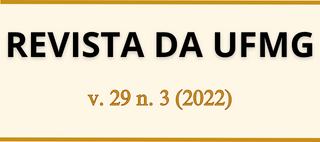Artistic expression essay on hunger in Brazil
The art that manifests hunger
DOI:
https://doi.org/10.35699/2316-770X.2023.40668Keywords:
Hunger, Artistic Expression, Art, Food and Nutrition SecurityAbstract
By contextualizing Brazilian hunger from a perspective of creative and humanized discoveries, artistic expressions emerged re-presenting the theme through another lens: art. The urgent appeals of the hungry constitute a challenge for food systems and, especially, with regard to free and permanent access to quality food in sufficient quantity – Food and Nutrition (In)Security. In this essay, sociocultural, scientific and artistic aspects were used as inspiration, re-presenting hunger through artistic expression, resulting in two products: a string and a sound poem. Cordel, a literary genre with meter, rhyme and prayer, expresses the question of hunger in the title “Tell me why?”. The sound poem “Como tem fome?”, essentially oral and experimental, results in reflections and manifestations. The essay brought out the authors' sensibility, bringing science and art closer together, bringing responsibility to base oneself on inspirations, letting it flow and sustaining one's own creation.
Downloads
References
ASSIS, R. A.; TENORIO, C. M.; CALLEGARO, T. Literatura de cordel como fonte de informação. CRB8 Digital, v. 5, n. 1, 2012. Disponível em: <http://hdl.handle.net/20.500.11959/brapci/9920>. Acesso em: 21 jul. 2022.
BAHIA, Sarah. Constrangimentos à expressão artística. REVISTA IBERO-AMERICANA DE PESQUISA EM EDUCAÇÃO, CULTURA E ARTES. ISSN 1647-0508. Dez. 2009. Disponível em : <https://repositorio.ul.pt/bitstream/10451/2698/1/Sara%20Bahia_invisibilidades_0pdf.pdf> . Acesso em : 25 jul. 2022.
BIESDORF, R. K. Arte, uma necessidade humana: função social e educativa. Itinerarius Reflectionis. Goiânia, v. 7, n. 1, 2012.
BRASIL. CONSEA Conselho Nacional de Segurança Alimentar e Nutricional. Lei de Segurança Alimentar e Nutricional. LEI Nº 11.346, DE 15 DE SETEMBRO DE 2006. Disponível em : <http://www4.planalto.gov.br/consea/conferencia/documentos/lei-de-seguranca-alimentar-e-nutricional>. Acesso em : 03 de julho de 2022.
BRASIL. IPHAN – Instituto do Patrimônio Histórico e Artístico Nacional. Literatura do Cordel. Disponível em: <http://portal.iphan.gov.br/pagina/detalhes/1943>. Acesso em: 13 de julho de 2022.
BRASIL. Ministério da Saúde. Secretaria de Atenção à Saúde. Departamento de Atenção Básica. Guia alimentar para a população brasileira. 2. ed. Brasília: Ministério da Saúde, 2014. 156 p
CASTRO, J. Geografia da fome (o dilema brasileiro: pão ou aço). 10a Ed. Rio de Janeiro: Antares Achiamé, 1980.
COVALESKI, R. L. Artes e comunicação: a construção de imagens e imaginários híbridos. Galaxia (São Paulo, Online), n. 24,p. 89-101, dez. 2012.
CHIBENI, Silvio Seno. O que é ciência? Textos Didáticos. Departamento de Filosofia, IFCH, Unicamp, SP. Disponível em : <https://www.unicamp.br/~chibeni/textosdidaticos/ciencia.pdf> Acesso em: 21 jul. 2022.
FOME OCULTA (PARTE 1). Direção: Thiago Domenici. Produção de Agência Pública. São Paulo, 2018. Disponível em: <https://apublica.org/video/2018/09/fome-oculta/>
GARAPA. Direção: José Padilha. Produção de Zazen Produções. Brasil: Downtown Filmes, 2009.
GOMBRICH, E H. A História da Arte. (16° edição). Rio de Janeiro: Grupo GEN, 2000. 1076 p. 9788521636670.
IBGE – Instituto Brasileiro de Geografia e Estatística. Coordenação de Trabalho e Rendimento. Pesquisa de Orçamentos Familiares 2017-2018: análise da segurança alimentar no Brasil. Rio de Janeiro: IBGE, 2020. Disponível em: <https://biblioteca.ibge.gov.br/visualizacao/livros/liv101749.pdf>. Acesso em: 14 de julho de 2022.
Jornal da Cultura. Pandemia da fome: 36% dos brasileiros dizem ter comido menos durante a crise.YouTube, 2020. Disponível em : <https://www.youtube.com/watch?v=jbDrL6dScME>
MENEZES, Philadelpho. Poesia Sonora – Poéticas Experimentais da Voz do Século XX.1ª edição. EDUC, 1992.
MORIN, E. (1966). El Espirito del Tiempo. Madrid: Taurus Ediciones.
OCVIRK, Otto G.; STINSON, Robert E.; WIGG, Philip R.; et al. Fundamentos de Arte. (12ª edição). Porto Alegre: Grupo A, 2014. 328 p. 9788580553765.
DICK, André Dick (Org.). Paideuma. São Paulo: Risco Editorial, 2010.
REDE PENSSAN – Rede de Pesquisa em Soberania e Segurança Alimentar e Nutricional. II Inquérito Nacional sobre Insegurança Alimentar no Contexto da Pandemia da Covid-19 no Brasil [livro eletrônico]: II VIGISAN, 2021: relatório final. São Paulo, SP: Fundação Friedrich Ebert: Rede PENSSAN, 2022.
PERES, S.P.; TATIT, P.; TATIT, L.A.M. Palavra Cantada. Fome come. Álbum Canções Curiosas. 1998. (3 min). Disponível em: Disponível em: <https://www.youtube.com/watch?v=-G1ozGVDd2I&t=104s> Acesso em: 21 jul. 2022.
VALENTE, Flávio Luiz Schieck. Fome, desnutrição e cidadania: inclusão social e direitos humanos. Saúde e Sociedade. v. 12, n. 1, p. 51-60, jan-jun, 2003.




